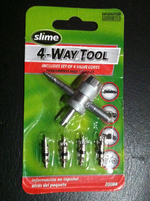I've been doing a lot of work replacing the deck around my pool this summer, and I finished everything except for a bench-like area right next to my pool shed. Essentially all the equipment is inside the pool shed and the plumbing in/out of the shed goes out of one of the sides, under the bench, and down into the ground. So when I took apart the bench outside and looked inside to see what the pipes did once they left the shed. I was surprised by 1 thing, and confused by another. I'll upload a picture when I get home of what I am talking about. What confused me was there were a bunch of styrofoam peanuts lining the ground around the pipes, some of which had spilled into the pool shed. I wasn't sure why these were here, unless it's supposed to help keep in the heat to prevent the pipes from freezing in the winter or keep the water warm if I'm heating it? Any idea why these would be here?
The other thing that surprised me, In the 2 lines coming in from the pool (one drain, one skimmer), and the return to the pool, the pvc had tire stem valves attached. So I'm thinking these are some sort of pressure relief system to prevent pipes from bursting in the winter, but it seemed very odd. The return pipe valve was clearly leaking, so I tightened it and it turned from a steady stream to a slow drip. One incoming line seemed fine, and the last actually had the cap on it, which when I started to remove, I immediately heard air hissing and the pump inside the shed started to whir because air was getting in the lines. I assume the valve stems are bad so it was 'open' and the pressure was pulling air in from the valve.
So I was wondering if anyone knows why the previous owners/pool builders would have put these valves in place and if they're normal. Again, I'll post a picture of the valves when I get home from work.
The other thing that surprised me, In the 2 lines coming in from the pool (one drain, one skimmer), and the return to the pool, the pvc had tire stem valves attached. So I'm thinking these are some sort of pressure relief system to prevent pipes from bursting in the winter, but it seemed very odd. The return pipe valve was clearly leaking, so I tightened it and it turned from a steady stream to a slow drip. One incoming line seemed fine, and the last actually had the cap on it, which when I started to remove, I immediately heard air hissing and the pump inside the shed started to whir because air was getting in the lines. I assume the valve stems are bad so it was 'open' and the pressure was pulling air in from the valve.
So I was wondering if anyone knows why the previous owners/pool builders would have put these valves in place and if they're normal. Again, I'll post a picture of the valves when I get home from work.


